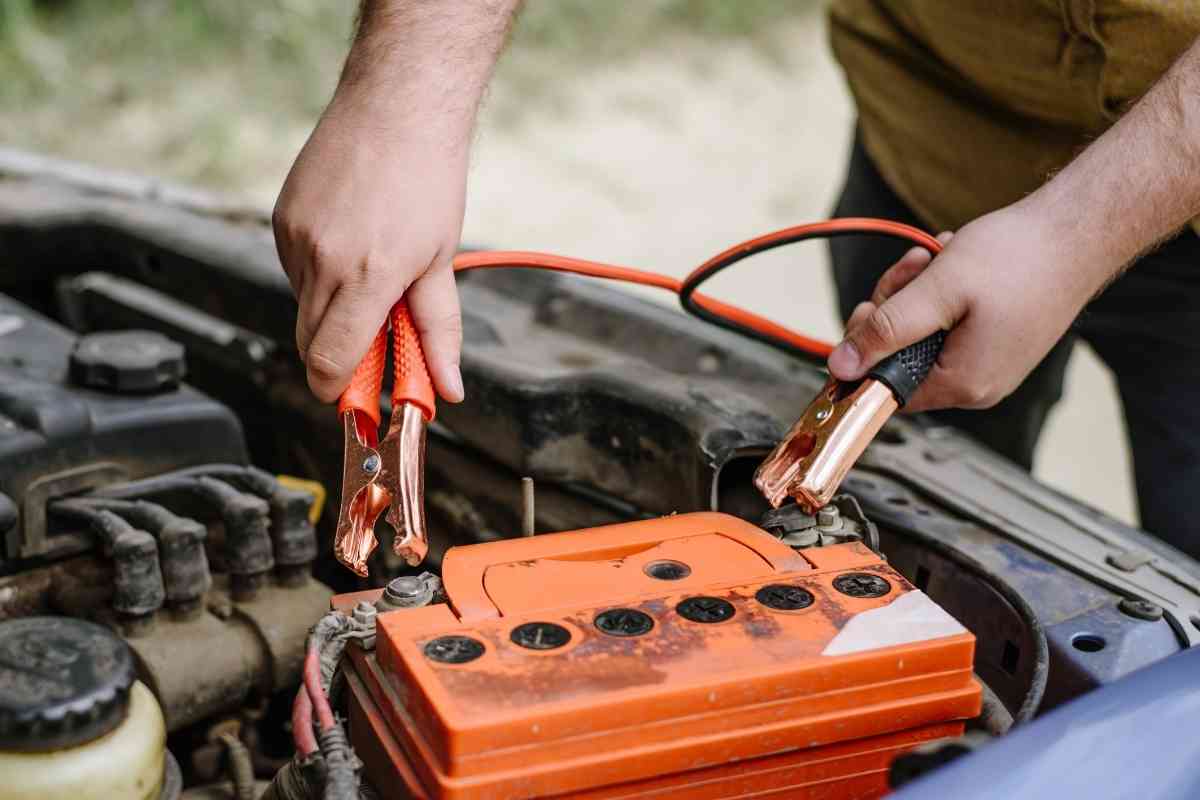Car Starts After Jump But Won’t Start Again: 7 Common Reasons
Is your car dead?
Have you tried jump-starting it? Does the car die shortly after jump-starting it? Here are some answers to the common search term: “car starts after jump but won’t start again.”
While this is a common issue, there are many different causes for it. If you are finding yourself asking these questions in regard to this unfortunate situation, this article can help educate you on some of the common causes and how to fix the issue.

This is one of the most popular search terms: “car starts after jump but won’t start again.” So, what are the reasons for this?
Some situations are simple, such as a faulty alternator or a dead battery, while others might be more complex. Let’s find out the seven most common ones.
Why do people ask: “car starts after jump but won’t start again” so much?
You car’s electrical system puts in a lot of work. It’s constantly working to provide electricity to the starting system, the infotainment system, charges and lights.
Not only that, but car batteries have a limited life. So, they can wear out easily. As a battery gets older, it causes more strain in the alternator and so forth.
So, it shouldn’t come as a surprise that “car starts after jump but won’t start again“, is one of the most common searched terms out there.
Why does my car start after I jump it but stop again?
If you jump your car and it starts up fine but then stops again soon, there could be a few issues, including:
- A faulty alternator
- A dead battery
- Bad terminals
- Your lights have drained the battery again
- You’re out of gas
- Bad jumper cables
- Damaged starter motor
To learn more about each of these reasons, keep reading.
1. Faulty Alternator
An alternator’s key function is to transfer power to the engine that is lost when you turn the car on. If the alternator is broken or faulty, there is no way to restore that power, thus not allowing the engine to fully start.
When people search “car starts after jump but won’t start again”, it’s usually too late, especially when it comes to the alternator.
The alternator is also responsible for transferring power from the battery to other electrical parts of the vehicle such as the radio and lights. When the alternator is faulty, the battery cannot receive enough of a powered charge to start and stay on.
The process of identifying whether or not the alternator is the issue can be tricky because both the battery and alternator, when in poor health, can present similar symptoms. The major telling sign of whether or not it is the battery or the alternator is to watch the behavior of the lights.
If the battery is the issue, the lights will start out dim, but regain their brightness shortly after. If the alternator is the issue, the lights will remain dim and begin to flicker in and out.

2. Dead Battery
When you jump your car battery and it starts but doesn’t start afterward, a frequent culprit is a dead battery. When a battery ages, the internal parts start to corrode, which decreases their ability to hold a strong charge for a long period of time.
This means it is able to start the engine once but struggles to start it again. People look at it this way: I jumped my car, so it should be ok. But that’s not the case.
That’s why they search “car starts after jump but won’t start again.”
While jump-starting the battery can get it going for a minute, it is not a permanent fix for the issue.
Once the car is started again after being jumped, let the cables stay on for a few minutes and let the car run while still connected to the cables. This will allow more power to flow to your car’s battery, thus allowing it to be on longer.
3. Bad Terminals
The terminals are what connect your battery to your car. The terminals are what you place the plugs on when you use jumper cables to jump the car. If the terminals are not working properly, there is no way for the charge from the jumper cables to reach the battery so it can get the charge it needs.
Even if the jump does start your car with bad terminals, it won’t last long and you will need to either try cleaning off any corrosion or replace the terminals and jump the car again to have a successful restart of the battery. If you find the terminals are significantly corroded, take your car to a professional.
4. Lights Drained The Battery
If you have ever left the interior lights on overnight in your car, then this issue may be familiar to you.
Using the battery to keep the lights on for an extended period of time while the car is off can drain the battery.
When the battery is completely dead and stays that way for a while, you then force hard work on the alternator to restart that dead battery. It is important to remember that the alternator is not the one to give credit to in restarting the battery because it only replaces the charge that is used when starting the engine.
Before searching “car starts after jump but won’t start again“, you can check the battery terminals. Chances are, if they’re corroded, they’re not working properly.
When the alternator is burnt out from trying to keep those lights, including your headlights, on for an extended period of time, it will not have enough charge to keep the battery started after jumping it one time, so you may have to jump it a few times.

5. Empty Gas Tank
Sometimes, your problem won’t be electric. So, when people search “car starts after jump but won’t start again“, they might be surprised to find it’s actually gas (or the lack thereof).
It is common, even if you have a little bit of gas in the tank, for the car to start after jumping it, but because there is little gas in the car, it will not last for long because there is no gas to continue to fuel it.
When you run your car with little to no gas in the tank, the fuel filter can be pumped full of sediment from the air and plug the filter, which will slow down the process of getting gas to the engine.
Letting air get into the tank can also prevent combustion from occurring, which prevents the engine from starting.
This is why it is important to always keep your gas tank at least a quarter of the way full.
6. Bad Jumper Cables
It is an easy assumption to make that unless the jumper cables are visibly broken, they should work completely fine.
If your cables are cheap and not the best quality, it is likely they are not very efficient anymore and are not charging the battery sufficiently.
So, what if it’s the cables? Part of the answer to “car starts after jump but won’t start again“, is that the cable provides just enough power, but not enough to sustain the engine.
If this is the case, the cables will not be able to correctly transfer that power through them to reach the battery which will result in not getting the power the battery needs to recharge. If your current cables are either significantly short, long, or lightweight, it is a good idea to invest in better-quality cables.
7. Damaged Starter Motor
Your starter is an electrical motor that is connected to the battery that helps the battery start the engine when you turn the car on. The starter requires energy from the battery to turn over the engine, so if the starter is damaged, there is no way for it to help start the engine.
One way to identify if the starter is the issue is that the engine won’t even turn on if the starter is damaged.
While looking for “car starts after jump but won’t start again“, the starter motor could pop up as a cause.
If the engine turns on just fine the first time, the starter is not the issue. If you do come to the conclusion that the starter is the problem, you can easily go to a parts store and replace that part yourself or take it to a car repair shop.
Closing thoughts on “car starts after jump but won’t start again.”
When dealing with a car that won’t start, you might think it’s only the battery or the alternator. The reality is that there are a lot of issues which could affect this.
Understanding what these issues are could save you a lot of money. Not only that, it can prevent any unwanted incidents on the road.
This article covers most of the issues that can lead to users asking “car starts after jump but won’t start again.” At the same time, it provides answers that are, most of the time, easy to apply.
